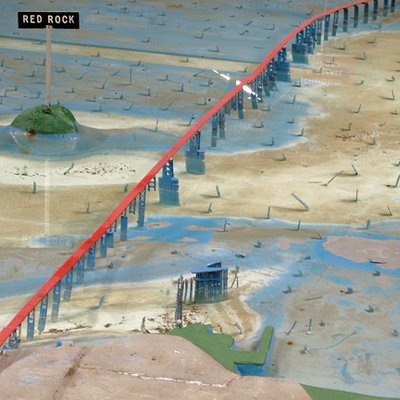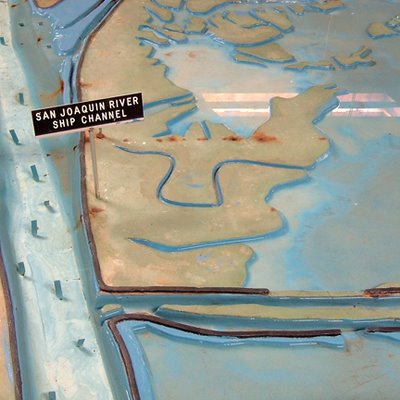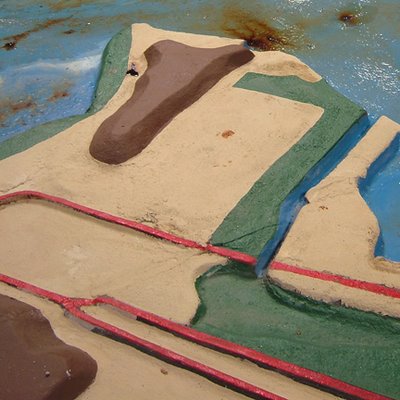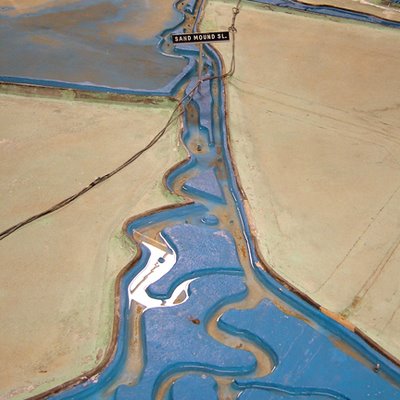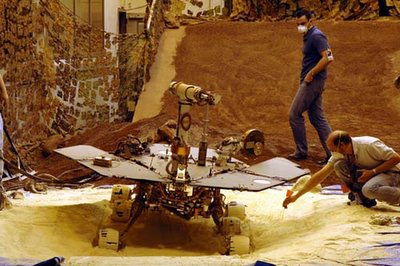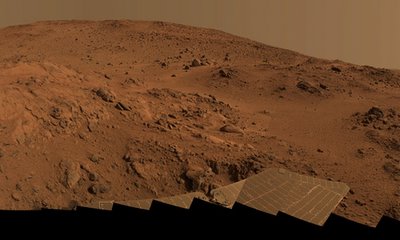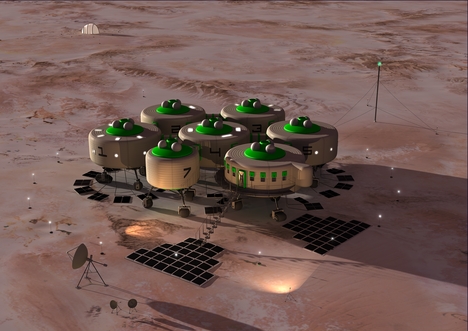 [Image: ANY Design Studios, via Building Design].
[Image: ANY Design Studios, via Building Design].
Following a few links from the perennially great things magazine, I discovered this new attempt at a future Martian architecture.
Meant to house “visitors,” we read, at the Martian north pole, “ANY Design Studios has designed a robot on legs built of Martian ice.” It comes complete with padded walls and a nice little bed.
Note, however, that the walls (on the right) have been painted to look like the Pacific northwest: even on Mars, we will live within simulations.
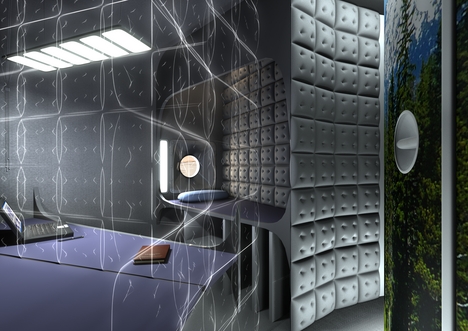 [Image: ANY Design Studios, via Building Design].
[Image: ANY Design Studios, via Building Design].
“What would it be like to spend nearly two Earth years at the Martian north pole,” we’re asked, “a place where darkness falls for nine months of the year, carbon dioxide snow flutters down in winter and temperatures drop to a chilly minus 150 centigrade?” I, for one, think it would be wonderful.
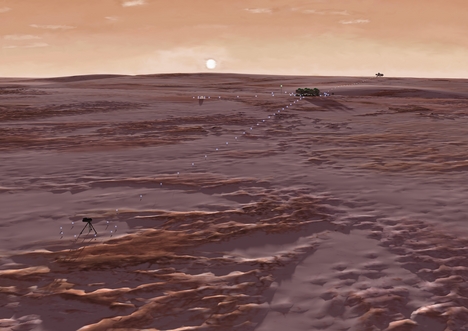 [Image: ANY Design Studios, via Building Design].
[Image: ANY Design Studios, via Building Design].
The architecture itself is “a self assembling six module robotic design on tracked landing legs.” It’s thus a cluster of smaller buildings that, together, “would allow for ten people to live indefinitely at the pole.”
The architects behind the project go on to explain that they “have also been exploring the possibility of reproducing programmable Earth environments in a room we have called the ‘Multi Environment Chamber’. Settlers on Mars may well be able to make themselves a cup of tea and settle into a chair with the sun gently warming their skin, cool breezes, and the sound of songbirds of an English orchard on a warm July afternoon” – assuming that such an experience wasn’t precisely what you were trying to get away from in the first place.
These “programmable Earth environments,” though, should undoubtedly include a setting in which you are sitting in a room in southern California, which has been kitted out to look like a Martian base – inside of which a man sits, reminiscing about a room in southern California that he once decorated to look like a Martian bungalow… Which would be referred to as the interplanetary architecture of et cetera, et cetera, et cetera.
Phrased otherwise, of course, all of this would simply be an inversion of what William L. Fox describes in his recent book, Driving to Mars. There, Fox writes about “the idea of practicing Mars on Earth” – which means simply that, even as I write this, there are teams of astronauts on a remote base in northern Canada, acting as if they are already surrounded by Martian topography.
It’s a form of psychological training: act as if you have already arrived.
So you simply turn that around and find, here, that anyone living inside this “self assembling six module robotic design on tracked landing legs” will really be “practicing Earth on Mars.”
Act as if you never left.
But why not practice, say, Jupiter, instead? Why not be even more ambitious and use each planet in this solar system as a base from which to simulate the rest?
Or you could just abandon simulation altogether, of course, and experience Mars as Mars.
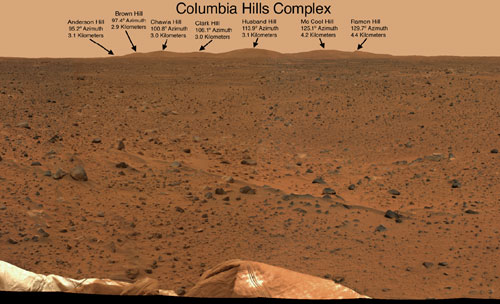
It’s interesting, though, in this context, to look at the naming practices used by NASA through which they claim – or at least label – Martian territory. Landscapes on Earth toponymically reappear on the Martian plains; there is Bonneville Crater and Victoria Crater, for instance; there is Cape Verde and a cute little rock called “Puffin.”
Mars is an alien landscape, then, in everything but name.
Even more fascinating, at least for me, is the small range of Martian hills now “dedicated to the final crew of Space Shuttle Columbia.” Accordingly, these hills now appear on maps as the Columbia Hills Complex. An entire landscape named after dead American astronauts? Surely there’s a J.G. Ballard story about something exactly like this?
Then again, according to one reviewer: “A story by J.G. Ballard, as you know, calls for people who don’t think.” Uh oh.
(Note: For more on Martian architecture don’t miss the unbelievably weird proposal behind Mars Power!, discussed earlier on BLDGBLOG).
